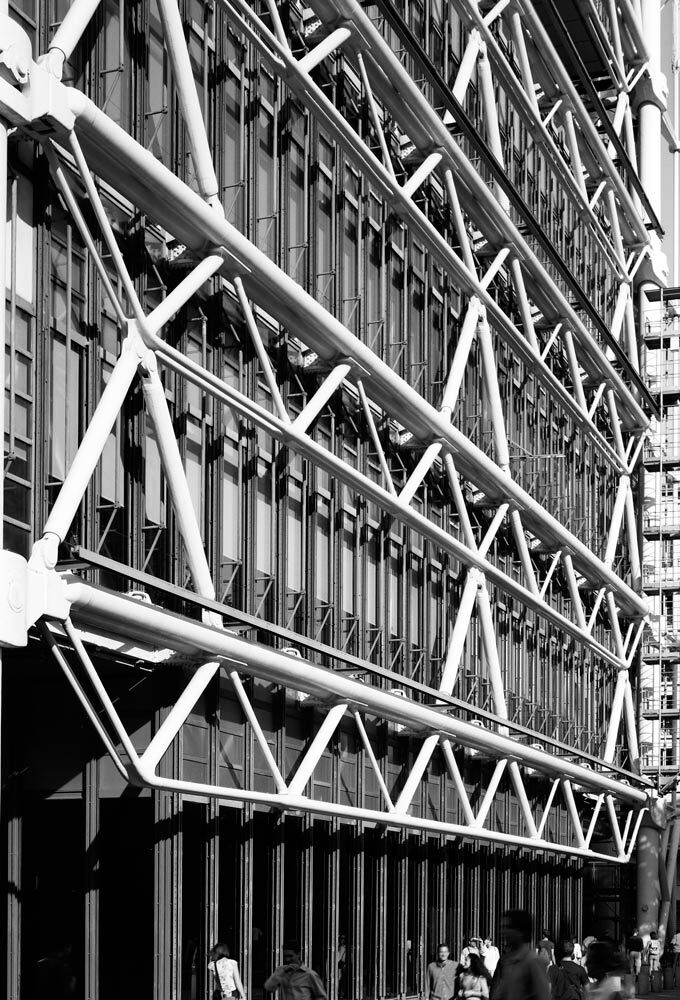When speaking of Arne Maasik conventionally, as you would do with any professional and highly skilled artist, one might continue by mentioning that he has participated in numerous exhibitions, been awarded many prizes, and that his works are represented in museum collections as well as private collections in Estonia and elsewhere in the world – but this is not what the artist would like to emphasise after all. Creation is what matters; this makes the creator bigger than himself, bigger than any detectable limits. New space outside the common is created through creation: a place where thoughts, feelings, and perceptions awaken, making the person within sensitive and aware of both the world and himself.
In the exhibition to be opened at the Haus Gallery, Arne Maasik shall communicate with his audience via space, the inspiration for which has come from a city - Paris. The artist’s role is to generalise, provoke, and fascinate; expressively, efficiently, and convincingly communicate the things that have fascinated him – this time the Paris, Paris, Paris of Arne Maasik!
Paris – a metaphor for something very personal, emotion with the romantic hint of a black-and-white film. Paris as a space within oneself, which one can return to again and again; where one can sit on the park benches, or get lost in the aura of boulevards – rhythm, mood, song that keeps on haunting you. Paris as deja vu, rather from a sensation, a yearning that makes you impatient for a specific situation that has taken place.
How many songs have been sung about this city? In the 1970s, Heldur Karmo wrote in his My Song of Paris: “Oh, Paris! I felt sadness when the train took me away from there. But on the road, my mind burst with joy. It is good to be abroad, but even better to be home!”
Did photographer Arne Maasik silently sing the same song inside when he returned to Tallinn, camera in his bag and thoughts full of the charm of the streets, squares, and towers of Paris? In the 1930s, Tallinn was called Little Paris because of its cosy cafés.
We have missed that city through the ages, either as artists or simply strollers on the promenade. Paris – a city where one can walk, hands on one’s back, wearing a long unbuttoned coat, as if life was just one endless stroll. Did Arne Maasik walk along the streets of Paris in a long coat, his hands on his back? We shall not ask this, but we are sure that he definitely sang there, be it on his own, because it is the rhythms that captivate the viewers of his photos of Paris. Photo worlds created modestly in black and white, the colour melody of which awakens within the viewer – the music of personal emotion. If musical scores were colourful, which one would be red? Did Arne ask this question of himself while standing under the Eiffel Tower, lens directed upwards to capture a massive metal construction that comes off as a red flower that has bent downwards due to its heavy blossom, to touch the pavement. What kind of jazz is it that emerges when looking at the gently disappearing silhouette of Montmartre or when averting one’s gaze from historical residential blocks to modern skyscrapers...?
Arne Maasik has made Paris his own city, seeing it as a detail or spread out on the hill in the distance, just like a coat which has been thrown over the backrest of the landscape with bohemian elegance just to stay there in its careless and charming way.
Paris, Paris whispers every photo the artist has captured as something that has an end, but still is endless. Could a city have an end? Each light in its windows tells the story of one of the thousands of people who have their own relationship with Paris, their own reason, their own music. Paris – the freedom to see things as they appear to be or as you want them to be.
Arne Maasik’s Paris is masculine in its logic, arranged neatly, framed thoughtfully, composed with the professionalism of an architect, but still so charmingly nostalgic, so filled with yearning that you want to look at Paris through white roses – and so be it. The photo exhibition “Paris, Paris” in the Haus Gallery, the black-and-white world of which is assisted with hopelessly romantic white roses in vases placed all over the exhibition hall.
.png)
